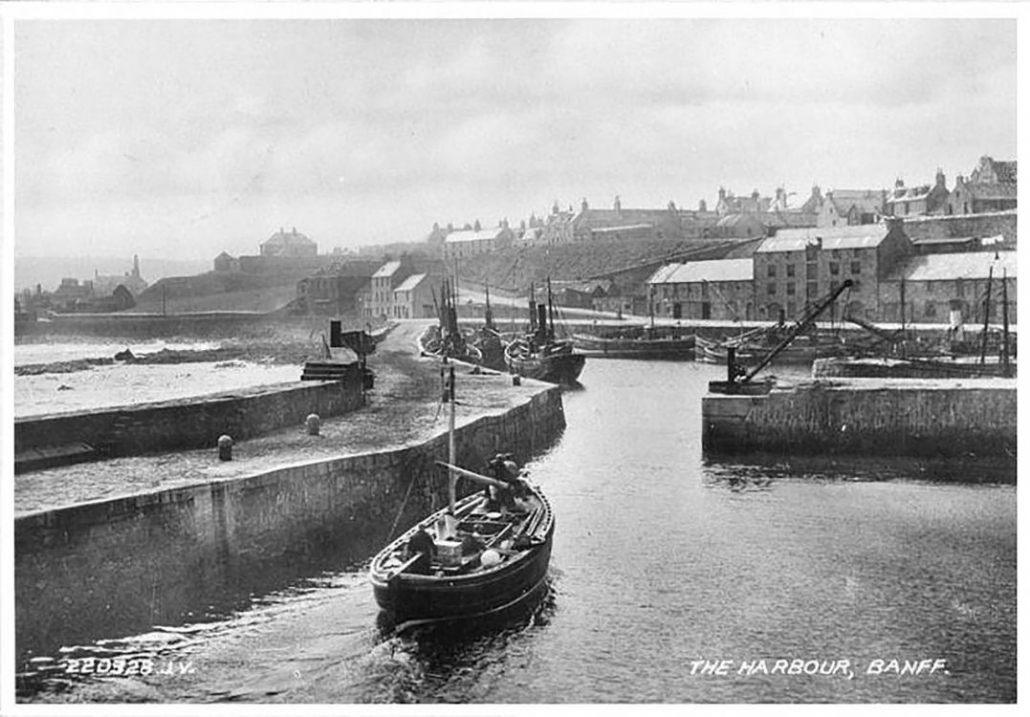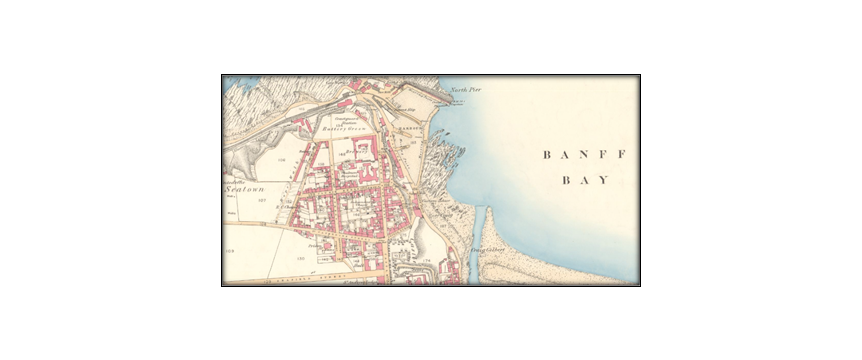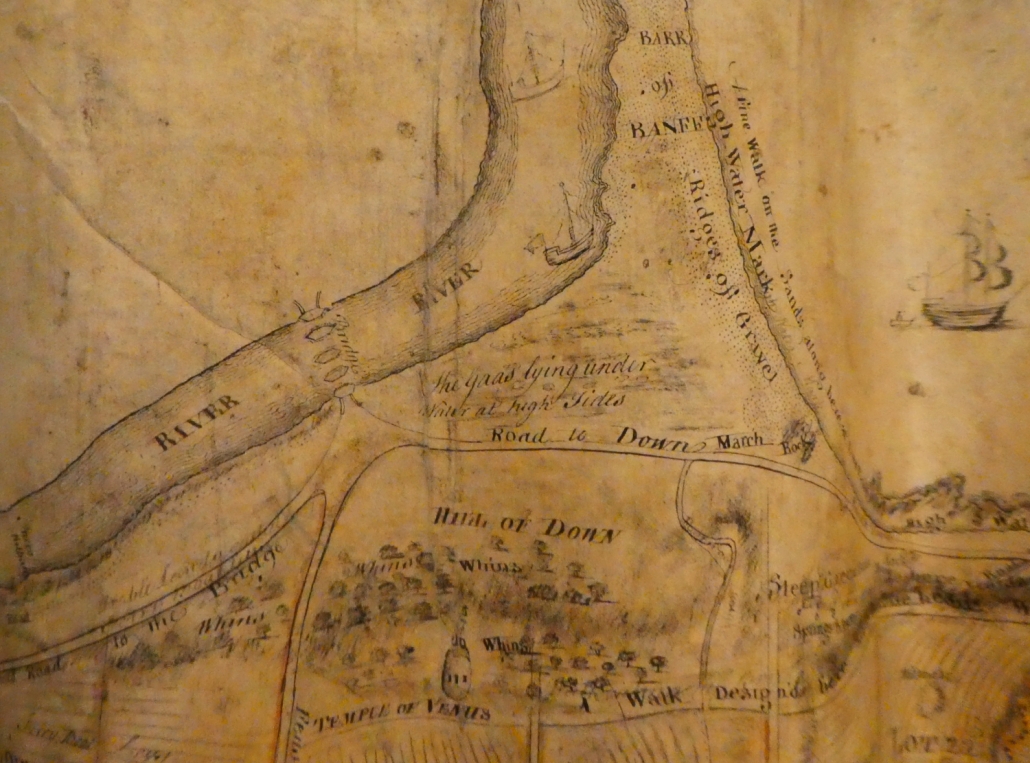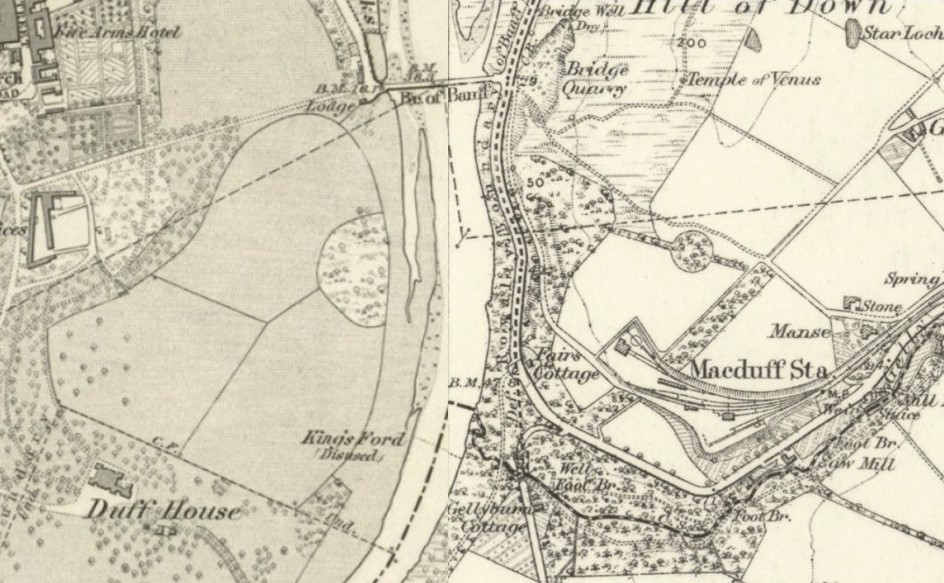
Walking past the harbour, partially repaired, raised questions about the railway pier and how the harbour had developed. The harbour in Banff is fascinating as for many years it was the home to fishing boats but also ships that sailed the world, bringing in raw materials needed in Banff and the surrounding area and exporting goods from this area.
The earliest mention of a harbour or safe haven is stated by Cramond (The Annals of Banff) to be in 1471, when the “Peel Heife” or Peel Haven, was next to the area used as the site for rebuilding the Kirk of Banff,St Mary’s Kirkyard, and that it had previously been where “boats and small craft were generally moored”.
In the early 1600s, plans were made for a harbour at Guthrie’s Haven and in 1625, James McKen, Fraserburgh, was employed to clear Guthrie’s Haven of rocks. (where the harbour is now) Records were found of people contributing £88 14s. 10d. towards building the harbour in 1626.
By the 1730s the harbour was still not complete and the town was unable to complete the work within a year as funds were low, despite gaining funding from across Scotland by voluntary contributions, so the storms in winter destroyed much of the work undertaken in the previous summer.
A renewed effort brought more contributions from across Britain and Europe e.g. Provost Hamilton in Bordeaux sent strong claret which was “rouped for eight guineas” and an order was issued by the Council for “a man from every family in town to work for a whole day or two tides, for carrying off the chingle thrown in to the harbour of Guthrie”
By 1760 there was “a basin with two piers, in which a ship of a hundred tons can lie with safety”.
By 1770 a new harbour was planned and the foundations were being laid, according to a plan by John Smeaton.
By 1818 further improvements were needed and a plan was drawn up by Mr Thomas Telford. The works were to cost £14,000 and consisted of building new piers. The work was not without problems as a storm in 1828 wrecked part of the partially built pier and the pier then had to be built higher and thicker.
Throughout its existence regular maintenance and improvements have been needed.
From approximately 1859 to 1910 the Banff, Portsoy and Strathisla railway ran right to the harbour but in 1910 the link to the harbour was dismantled. It can be seen on the map of 1866. The National Library of Scotland has several maps of Banff that show how the harbour has changed over time.
The harbour has faced periods of great prosperity and some really difficult periods so hopefully better times will return soon for this wonderful historic harbour.



